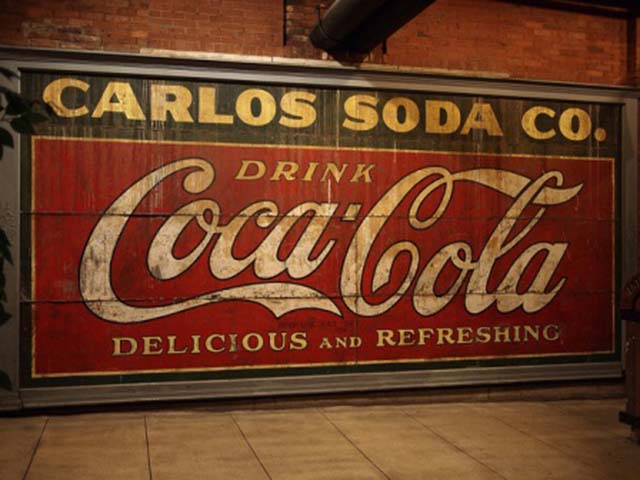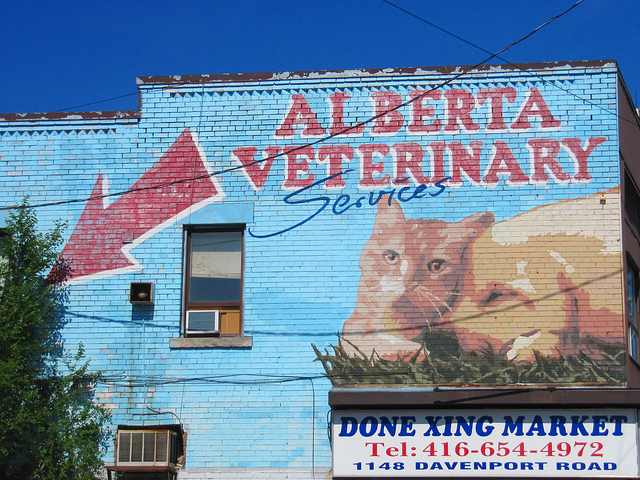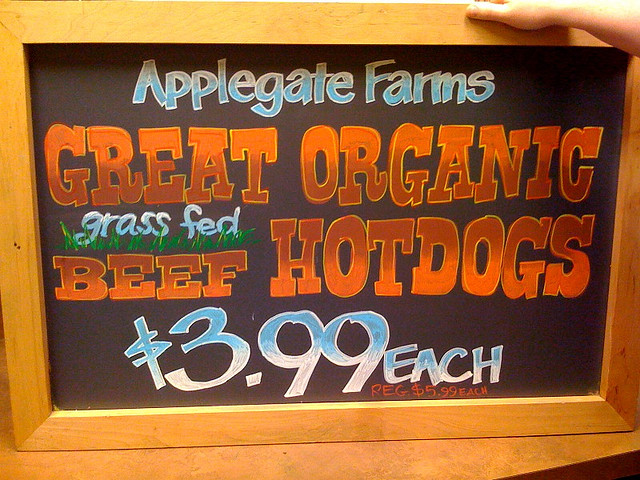 Hand painted signs have been a large component in the long history of visual advertising. Sign painters displayed their eye-catching work on restaurants, billboards, political advertisements, traffic signs and more. Hand-drawn and painted signs created a rich visual landscape of colors and fonts. Though hand painted signs faded away as illustration software came onto the scene, a large resurgence of artisanal signage has occurred as a whole new generation admires the resonant imagery of handcrafted signs by coupling this craft with today's production technology. The history of painted signage is as rich as its bold visuals and a renaissance of this visual style is transforming the way the public looks at old-fashioned advertising signage.
Hand painted signs have been a large component in the long history of visual advertising. Sign painters displayed their eye-catching work on restaurants, billboards, political advertisements, traffic signs and more. Hand-drawn and painted signs created a rich visual landscape of colors and fonts. Though hand painted signs faded away as illustration software came onto the scene, a large resurgence of artisanal signage has occurred as a whole new generation admires the resonant imagery of handcrafted signs by coupling this craft with today's production technology. The history of painted signage is as rich as its bold visuals and a renaissance of this visual style is transforming the way the public looks at old-fashioned advertising signage.
Early History of Hand-Painting
Before Photoshop and Illustrator became standard, artists climbed onto ladders to hand paint billboards and the sides of buildings. Different fonts conveyed different emotions and hand painted signs visually communicated what people could expect from that product, service or establishment just as digital display ads do today. Southern restaurants depicted folk lettering, conveying a home-style feel. Carnivals and circuses used bold fonts and bright colors to create whimsical signage indicative of quirky performance art.
Many early sign painters learned the trade through apprenticeships or were self-taught. Though the practice was out of necessity, it was also an outlet for artists to share their talents and passions. When vinyl printers appeared and were able to mass produce one hundred signs in the time it took to hand draw or paint one, some traditional sign painters transitioned to vinyl printing, learning to mesh the two arts together.
 Mixing Nostalgia and Technology
Mixing Nostalgia and Technology
Today, brands and businesses are turning to artists that use a mix of hand painting and drawing and technology to create signs with an old-time feel that still have a place in today's advertising space. Some designs are created by hand and then put into computer programs to blow up or manipulate the design.
Today's technologies make it easier than ever for companies to create signs that mimic the look of traditional hand painted signs or mass produce one hand painted or drawn sign. While younger people interested in traditional sign painting may learn through connections or apprenticeships, there are still a handful of trade schools that offer sign-graphics programs, allowing for today's generations to start with a pencil and paintbrush and slowly integrate these traditional creation tactics with current computer programs. This permits hand painted signs to be replicated and mass-produced for commercial uses.
 Organic Goods Need Organic Signs
Organic Goods Need Organic Signs
The public is changing the way they look at food and products. People want to know where their food comes from and they want to know businesses exist that share these same ideals. Restaurants and stores that sell organic, home-grown goods that are fresh and free of additives may look to hand painted signs or vinyl signs that resemble traditional hand painting to convey that simple, unprocessed feel. Whole Foods brought in a professional sign painter to teach its designers how to do chalk board art correctly, making for a brand new era in Whole Foods signage. These chalk art signs, which can be found throughout Whole Foods stores, provide a sense of small-time business within a corporate setting. Whole Foods hires graphic designers who try their hand at sign drawing or work alongside sign painters to incorporate the old-style sign creation with current digital applications.
Hand-crafted signs may have been overtaken by today's quick-turnaround production techniques, but the tradition of these signs is making a strong comeback in current advertising space. They are being integrated with vinyl production, recreated digitally or are specially created by the minority of shops concentrating on hand painted advertisements. By reviving hand painted and drawn sign art, and finding its place within and beside modern technology, this type of traditional signage holds will continue to hold an important place in visual advertising.


















































































